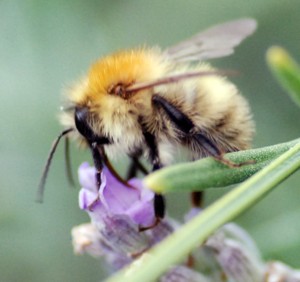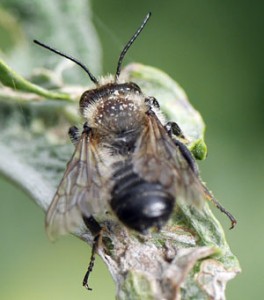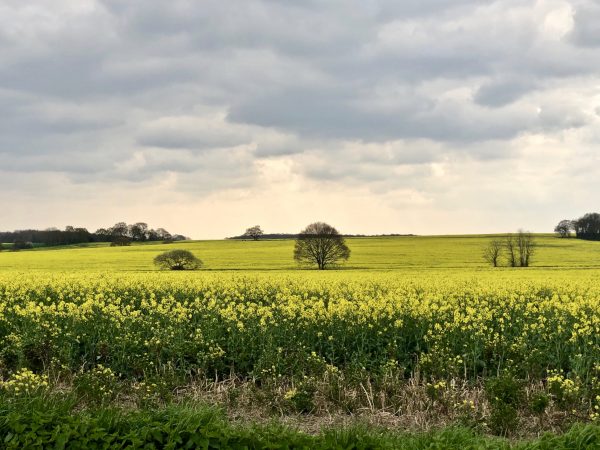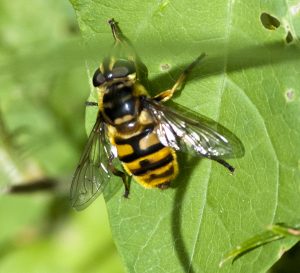Insect Pollinators in decline

The science journal Nature has published the results of another insect survey, specifically of pollinating insects. The UK pollinator monitoring scheme looked at some 353 species of bees, bumblebees and hoverflies. The survey analysed 700,000+ sightings of pollinating insects over thirty years or more (1980 to 2013). The survey yielded information about the changes in the range of these different pollinators - that is the different parts of the countryside that these insects were found in. The survey did not attempt to determine actual numbers of bees etc in an area. There were “winners and losers’ in the survey but the overall picture was somewhat depressing.
- One third of British wild bees and hoverflies are in decline, in that their range is now smaller
- Only one in 10 of the species have expanded their range. The lobe spurred furrow bee has extended its range five fold and is now considered an important crop pollinator.
- The ivy bee (which arrived in the UK in 2001) has spread rapidly (year on year increase of circa 16%)
- The range of certain bees, like the red-shanked carder bee and the large shaggy bee, has declined significantly. (between 40 and 50%)
- The range of upland bee and hoverfly species have been particularly affected - falling by 50%.
- The range of bees that are associated with pollinating crops has increased.
 The reduction in the range of various species could ultimately lead to the loss of species from our countryside - which is a loss in biodiversity, and whilst the increase in range of some is positive - if at a later time they are lost (due to climate change / disease) then there are fewer species to step in to replace them - ecosystem resilience is reduced. The loss of insect pollinators not only affects our flowers and crops but has consequences for birds, reptiles, bats, frogs etc - for whom they are a source of food.
The reduction in the range of various species could ultimately lead to the loss of species from our countryside - which is a loss in biodiversity, and whilst the increase in range of some is positive - if at a later time they are lost (due to climate change / disease) then there are fewer species to step in to replace them - ecosystem resilience is reduced. The loss of insect pollinators not only affects our flowers and crops but has consequences for birds, reptiles, bats, frogs etc - for whom they are a source of food.
It may be that the diminution in range of upland species is already due to climate change (the changing pattern of our seasons). In addition, our countryside has changed over the decades. Many wild flower meadows have been lost , hedgerows have been removed and roadside verges are now cut mechanically and often brutally. Agriculture relies on the intensive cultivation of a limited number of crops such as oil seed rape. In consequence, the number of niches / micro-habitats for insects and other animals (and plants) has been reduced.


Wildlife friendly farming and gardening can help offset some of the effects of intensive agriculture. Wild flower margins around fields are good news for insects and other species, as are weedy (wild flower) corners in city gardens or the growing of bee-friendly flowers in urban gardens. The continued ban on the use of neonicotinoids (which have been heavily implicated in the decline of bee populations) should also prove beneficial to bees and other pollinators.
For advice on creating pollinator friendly gardens - see https://www.rhs.org.uk/science/conservation-biodiversity/wildlife/plants-for-pollinators
For some wonderful pictures of our bees, bumblebees and hoverflies - visit https://www.theguardian.com/environment/gallery/2019/mar/26/uk-pollinating-insects-survey-losers-and-winners-in-pictures
Comments are closed for this post.

Thank you for highlighting this article. The survey is so significant, showing what has already happened and why and also predicting the possible consequences if this pattern of change continues. Publicising this information widely, in this kind of simple format, may motivate more of us to raise awareness in local communities and do what we can in the immediate environment, urban or otherwise, to help compensate for loss of habitat and other threats.
The accompanying photos say it all. Here in Devon, our Spring landscape has more swathes of yellow, year on year. Our towns, villages and individual gardens, however, are filling up with considered, insect friendly flowers, herbs and veg. Some of the surrounding fields do, indeed, have wildflower margins. A tour of the organic farm which supplies our town’s pannier market with quality vegetables and fruit showed what can be achieved using plants to encourage insects that will then control specific crop pests. Loved The Guardian gallery.
Pam Symons
15 April, 2019